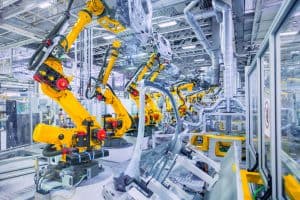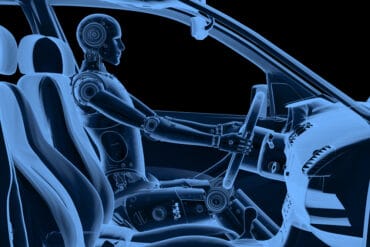
Manufacturing factories of the future will involve humans working with machines, automation, robotics, and all the data working in concert. This will all be made possible by 5G and edge computing.
What’s giving manufacturers the edge in today’s economy? The edge, of course. But the success of edge in manufacturing rests on one critical factor – data.
That’s the prognosis from Ben Dollar and Rob Kasegrande, leaders from Deloitte’s 5G and Edge Computing practice, who are bullish on the prospects of automated, connected manufacturing, thanks to the rise and availability of 5G and edge technologies.
5G, together with edge computing, will provide the digital infrastructure platform for manufacturers to realize new ways of operating,” says Kasegrande in a recent presentation with Dollar. 5G represents a new way of connecting not seen before, he emphasizes. “Compared with previous technologies, 5G and edge enable the connection of so many more devices—whether that’s sensors, cameras, or machines—while maintaining the same level of network performance.” These advancements will provide manufacturers “the ability to consume, analyze, and act on massive amounts of data in real time.”
See also: Manufacturing Increases its Edge with the Help of 5G
When it comes to data, scale is critical, Dollar says. “The whole concept of smart manufacturing is that you are connecting data and assets for actionable insights. As smart manufacturing begins to be executed at scale, the number of devices and the amount of data available will dramatically increase. Organizations will be able to connect technology in numbers and at a scale that we haven’t seen before. Fundamentally, that’s how 5G will transform the manufacturing industry. And this goes beyond the four walls of the factory—it’s relevant to the entire digital thread, from engineering and product development to customers and supply chain.”
Regardless of size or specialty, there’s an edge case for everyone, the Deloitte speakers emphasize. “Whether a manufacturer is big or small, discrete or process, whether they produce fighter jets or silicon wafers, there are 5G manufacturing use cases or applications for everybody,” says Kasegrande. “The critical question is around what to do with it, and the focus should be on the business outcome and value generation. The use cases will look different depending on the manufacturing subsector, but there isn’t a manufacturer that 5G and edge computing isn’t relevant to.”
Deloitte surveyed more than 600 manufacturers, identifying use cases including “factory asset intelligence and performance management, quality sensing and detection, factory synchronization and dynamic scheduling, augmented workforce efficiency, smart warehousing, smart conveyance, engineering collaboration and digital twins, and plant consumption and energy management.”
The bottom line is 5G and edge will deliver transformative effects to manufacturers. “Build out the future vision of the organization and how 5G and edge computing can enable or accelerate that,” says Kasegrande. “Once a strategy is determined, manufacturers should move quickly to start to deploy 5G and edge infrastructure and enable initial use cases. The technology is scalable, so a pilot to test functionality and viability is a great starting point. This can be used as a springboard to push new capabilities across the organization.”
Start with pilots “to rapidly learn, scale, and secure buy-in,” Dollar adds. “If you look across the 5G in manufacturing use cases, the technology can help your organization use data to illuminate insights into your factory that you hadn’t seen before.”
At last, the factory of the future and Industry 4.0 concepts – long a dream of business leaders and planners – have become realities. Machines, systems, locations, partners, and people are connecting to enable seamless collaboration from the design to the delivery of products. However, there is still much work to be done – especially when it comes to marshaling the data resources that will deliver the capabilities needed.
It’s not just all about technology, Kasegrande says, noting that factories of the future “will involve humans working with machines, automation, robotics, and all the data working in concert.” This is all made possible by 5G and edge computing, he says.






























